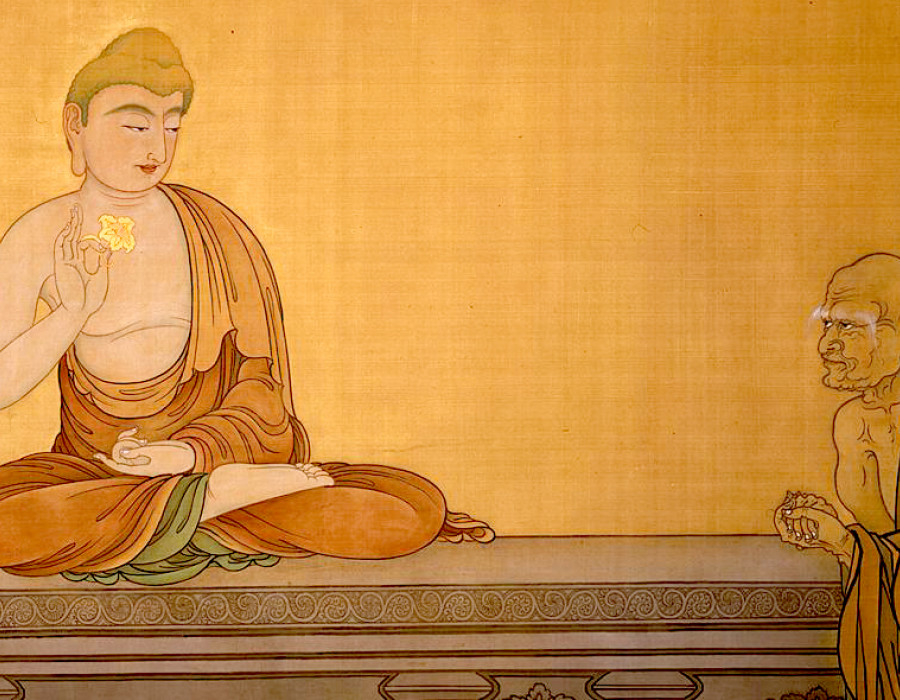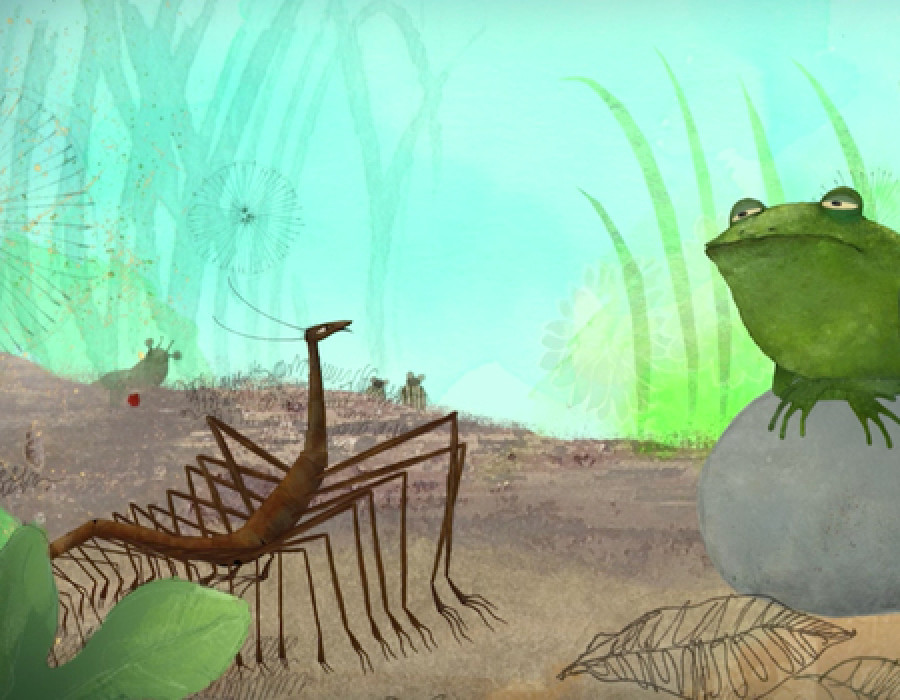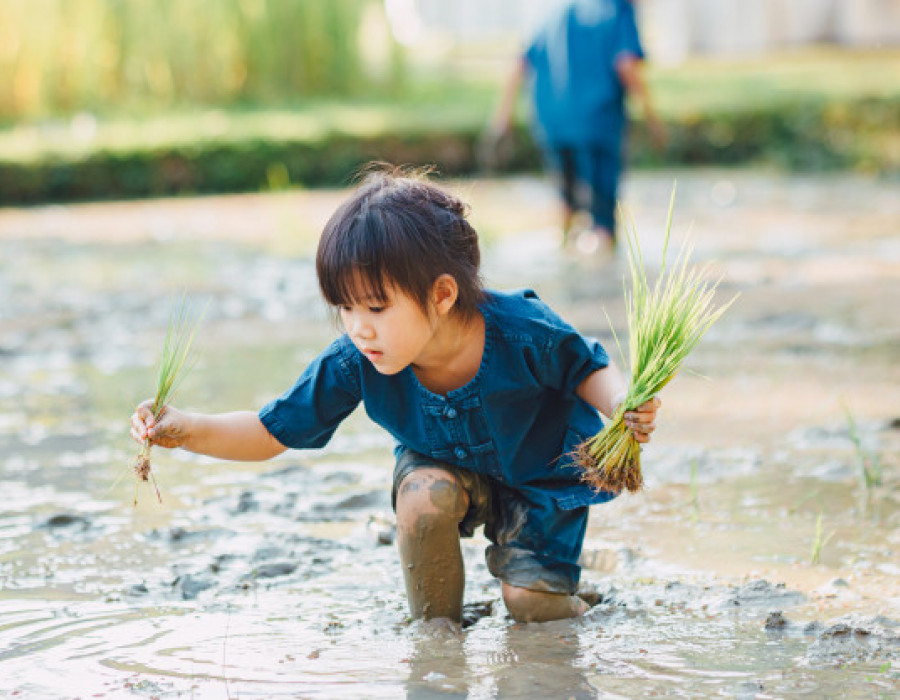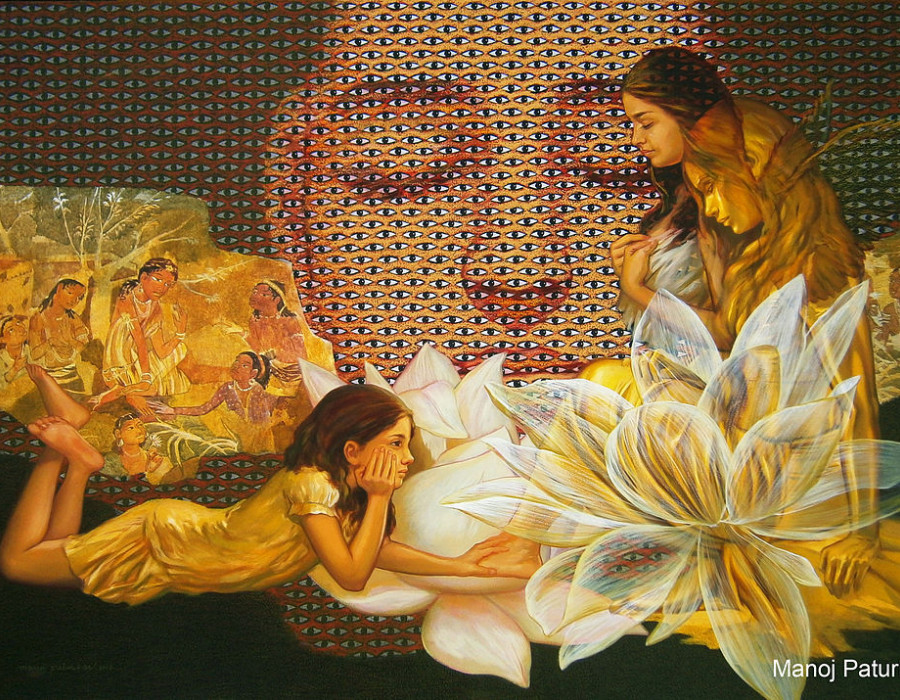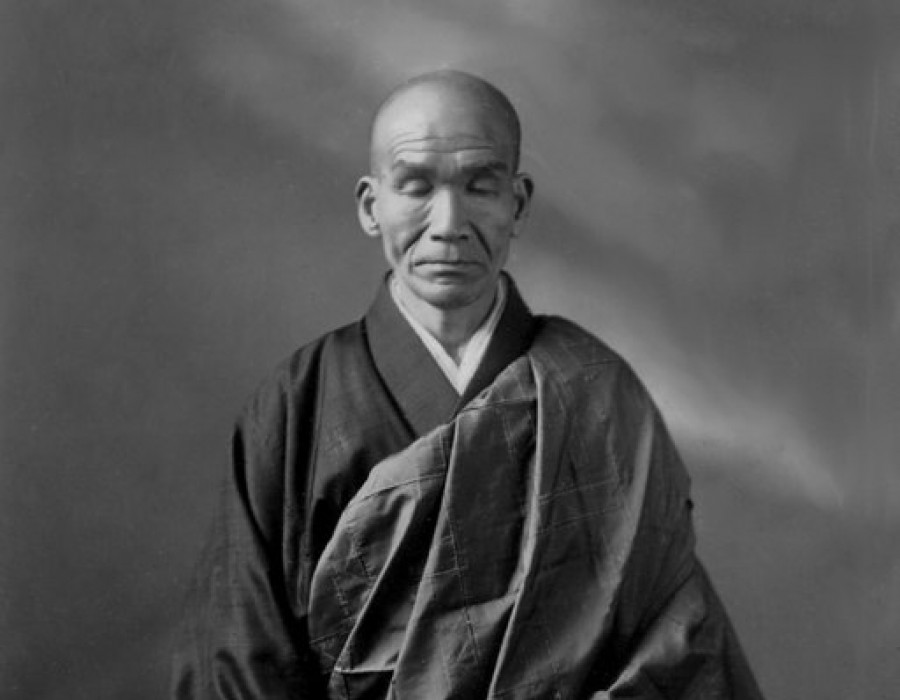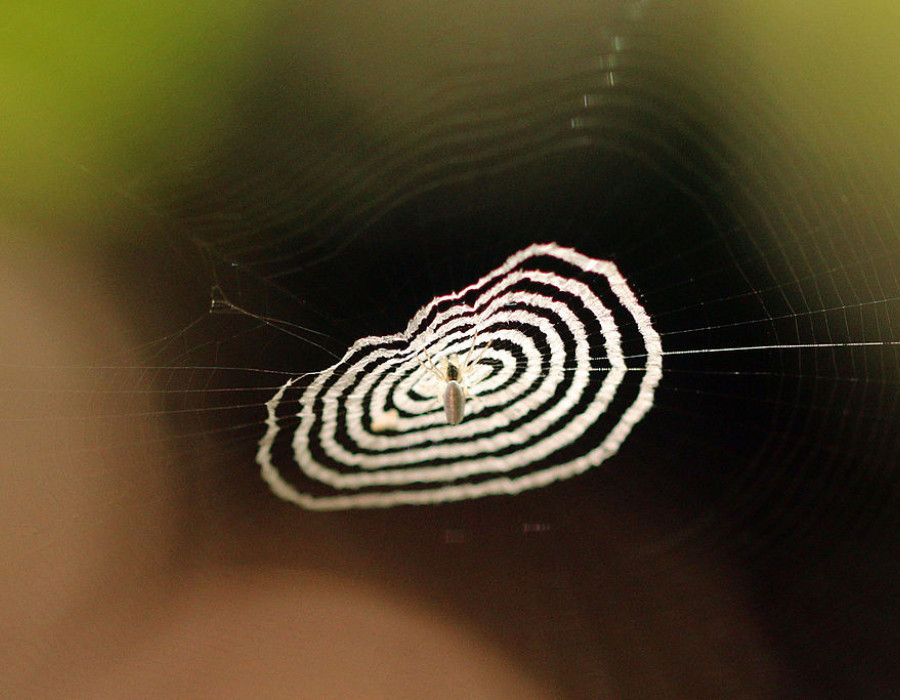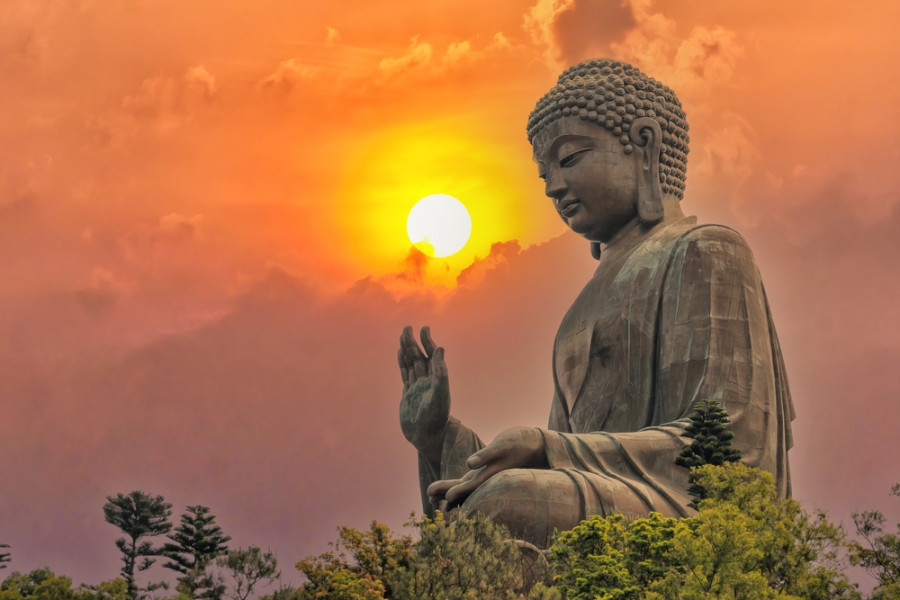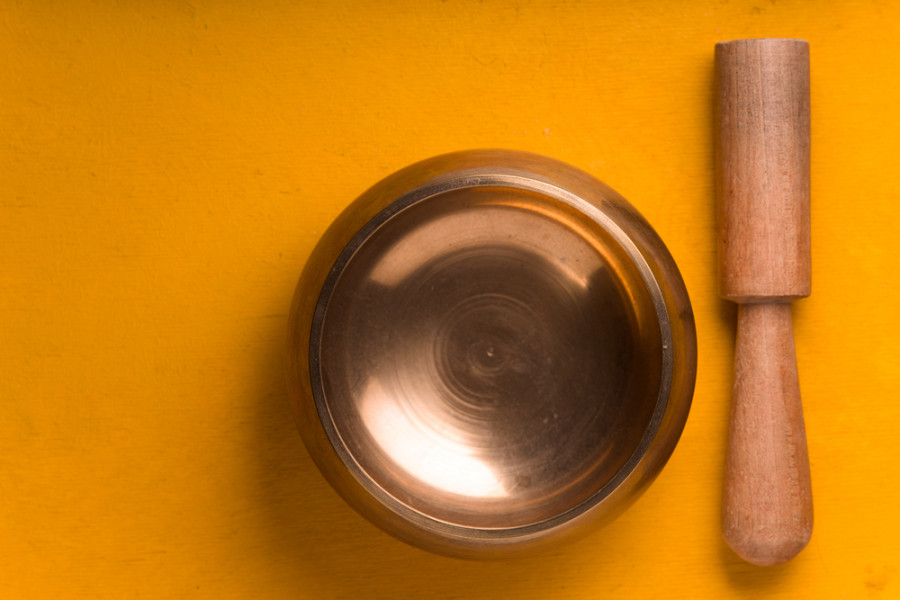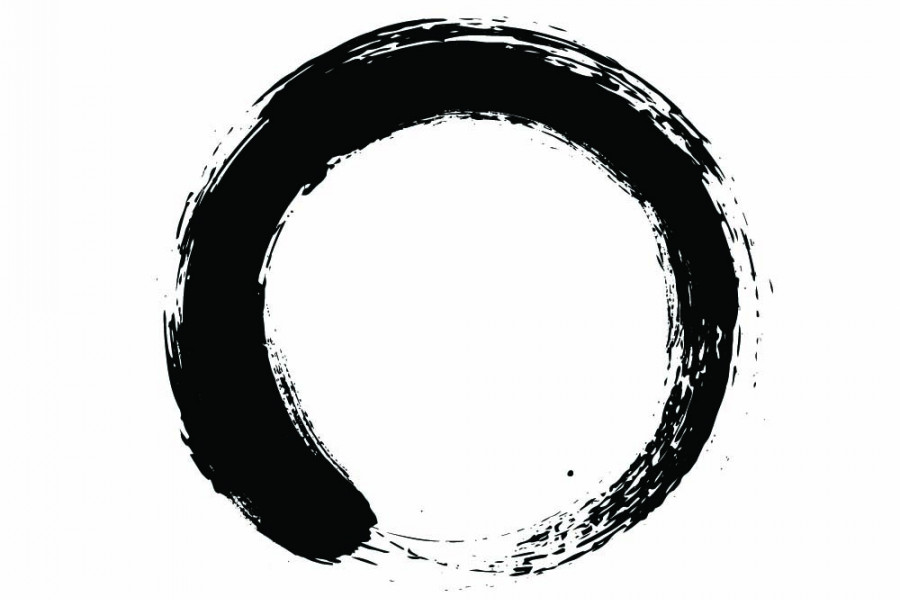
Martin Goodson
The Six Paramitas: 4. Devoted Energy
Exercises in Mindfulness
Transform greed, hatred, fear and delusion into the wisdom and compassion of the Buddha Nature.
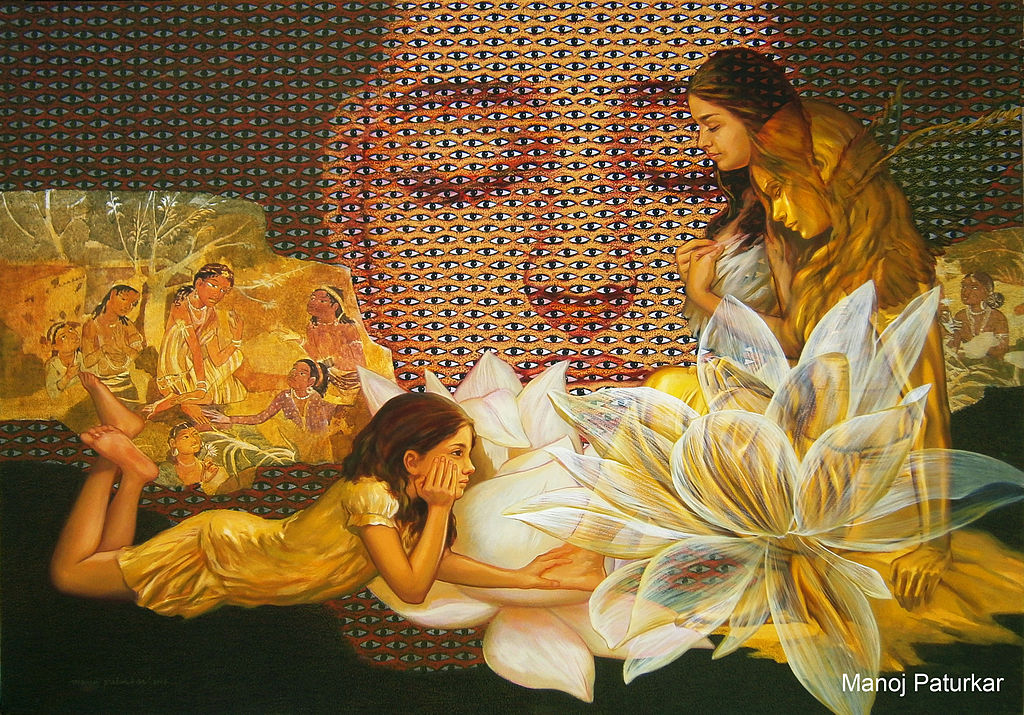
Painting by Manoj Paturkar
https://commons.wikimedia.org/wiki/File:PaintingbyManoj_Paturkar.jpg
Devoted Energy is the fourth of the six paramitas . We have already looked at the paramita practices connected with Giving, Discipline and Patient Endurance. With Devoted Energy we will lay the foundations for understanding the final two practices. In fact they are all connected because they are all concerned with energy management.
What is this energy? Put simply it is the energy of life itself. It is the energy we use every time we look or listen or respond; whenever we move, give rise to a thought, feel something, speak, perceive or even form a view. Our thoughts are a form of energy too. Whenever we hope, fear, love or simply realise something we are using energy to do it.
We call this energy ‘life’ because all of the activities mentioned above are performed by living beings. In Buddhist terminology it is the energy of the Buddha-nature. It is also the energy at the root of our emotional life. There is a Mahayana saying: “The passions are the Buddha-nature and the Buddha-nature is the passions.” This doesn’t mean that my habitual angry outbursts are the same as the wisdom and warmth of the Buddha but the same energy underpins both.
Buddhist practice is about transforming the forms that the life energy takes: from the greed, hatred, fear and delusion of ‘I’ to the wisdom and compassion of the Buddha. The energy of life flows from the heart every moment that we are alive. Right now it is reading these words; it flows in the direction of the heart’s attention.
The first paramita is Giving because we give ourselves wholeheartedly into what at this moment is being done. If ‘I’ am thinking about one thing whilst the body is doing something else then the energy goes into this split state and become habituated in it. If all our energies are collected together and we wholeheartedly give ourselves, we experience the life force in the ‘doing’. So this is our discipline. We do not just do it once or twice but cultivate a continual practice of wholehearted living in accordance with our precepts of good conduct. In cultivating our new habit we learn to endure the life energy, which is naturally conservative, rather than allow it to stray back into its old habits. This thwarting of my preferences can be uncomfortable but has to be endured patiently.
When this patient cultivation of the life force is carried out, the old forms are dissolved by the very energy that once powered them. Instead of the energy being tied up in ‘my wanting’ or ‘my opinions’ it is freed up to respond naturally and appropriately to each situation as it arises. This freeing up means that the energy activates the ‘heart-mirror’ that reflects things as they really are. Since one quality of the human heart is warmth, its natural empathy is activated as compassion.
The more we cultivate this ‘giving myself’ into what is being done the less of a split there is between body and mind and as a result we find ourselves living in our bodies a bit more. The qualities of the life energy become apparent. We become sensitive to its shape: whether it’s bright or dull, high or low, cramped or spacious and so on. There is a certain feel to life’s energy at any given moment.
How does your energy feel right now? If it’s all over the place then collect it by pulling the body together. Notice how the character of this energy changes when you stand or sit; whether you slouch or walk with good form. Notice the quality of your energy when the emotions are involved. What happens when you vent your opinions about others? Try more and more to keep one eye on the quality of your energy. You will notice how your mood, state of being and thought patterns are all inter-related and necessarily so because it is the same energy that informs them all. This energy is contained in the body so rather than expending it all in thinking, use it to move. See how much more malleable the energy is when the body becomes involved. Experiment with all this.
So now we have our four-fold foundation. We will look at the further applications of the energy of life when we discuss the last two paramitas: dhyana (meditation) and prajna (wisdom).
Text copyright to The Zen Gateway.
The Six Paramitas | Martin Goodson
Exercises in Mindfulness
Dharma Centre
We have just launched our online Dharma Centre. All are welcome...
Join our Community!
